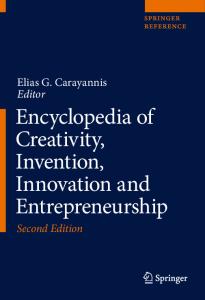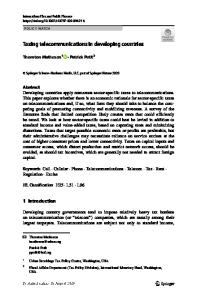Photovoltaics for Rural Electrification in Developing Countries A Ro
The evidence suggests that many solar programs are being designed and implemented in isolation and without reliance on published guidelines or the experience gained by others. The conclusion is obvious: the likelihood of a program being successful would b
- PDF / 7,182,207 Bytes
- 253 Pages / 453.543 x 683.15 pts Page_size
- 32 Downloads / 318 Views
Tania Urmee David Harries Hans-Gerhard Holtorf
Photovoltaics for Rural Electrification in Developing Countries A Road Map
Green Energy and Technology
More information about this series at http://www.springer.com/series/8059
Tania Urmee David Harries Hans-Gerhard Holtorf •
Photovoltaics for Rural Electrification in Developing Countries A Road Map
123
Hans-Gerhard Holtorf University of Oldenburg Oldenburg Germany
Tania Urmee Murdoch University Murdoch, WA Australia David Harries University of Western Australia Crawley, WA Australia
ISSN 1865-3529 Green Energy and Technology ISBN 978-3-319-03788-2 DOI 10.1007/978-3-319-03789-9
ISSN 1865-3537
(electronic)
ISBN 978-3-319-03789-9
(eBook)
Library of Congress Control Number: 2016939357 © Springer International Publishing Switzerland 2016 This work is subject to copyright. All rights are reserved by the Publisher, whether the whole or part of the material is concerned, specifically the rights of translation, reprinting, reuse of illustrations, recitation, broadcasting, reproduction on microfilms or in any other physical way, and transmission or information storage and retrieval, electronic adaptation, computer software, or by similar or dissimilar methodology now known or hereafter developed. The use of general descriptive names, registered names, trademarks, service marks, etc. in this publication does not imply, even in the absence of a specific statement, that such names are exempt from the relevant protective laws and regulations and therefore free for general use. The publisher, the authors and the editors are safe to assume that the advice and information in this book are believed to be true and accurate at the date of publication. Neither the publisher nor the authors or the editors give a warranty, express or implied, with respect to the material contained herein or for any errors or omissions that may have been made. Printed on acid-free paper This Springer imprint is published by Springer Nature The registered company is Springer International Publishing AG Switzerland
Preface
…millions of people in the world’s poorest countries remain imprisoned, enslaved, and in chains. They are trapped in the prison of poverty. It is time to set them free… —Nelson Mandela
Over 1 in 5 people living in the world today do not have access to electricity and many more have access to only very limited amounts of electricity. In the main, these are people who live in rural areas in developing countries. That lack of access to modern energy services means not only that these people have a low quality of life, but also that they are not provided with basic services, such as healthcare and education. They are caught in an energy poverty trap. Poverty results in having no access to electricity, and they remain poor while they do not have access to electricity. That there is a moral, social and economic need for electrification programmes to provide these people with access to electricity in not in question. What is in question is how to do so efficiently, cost effectively
Data Loading...











